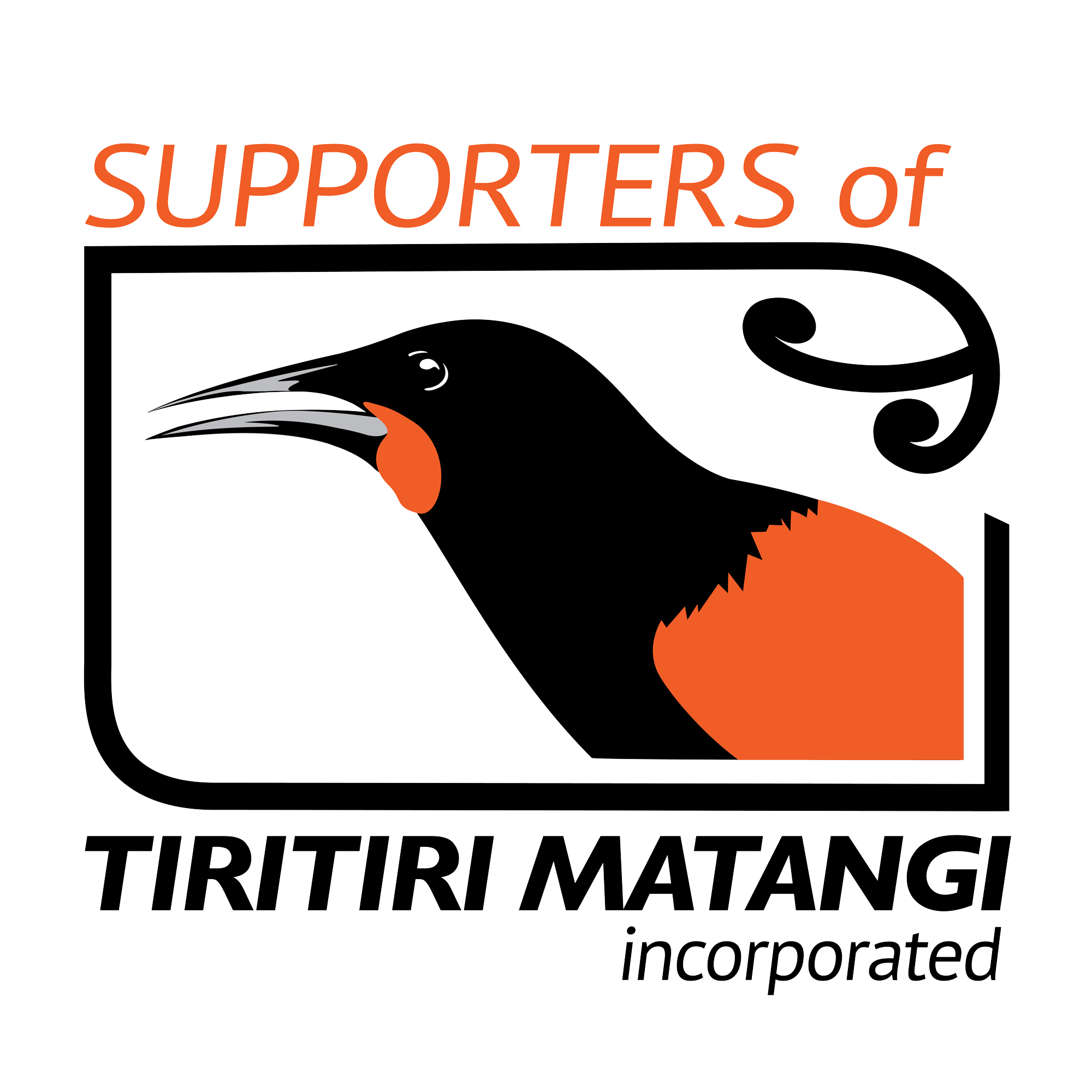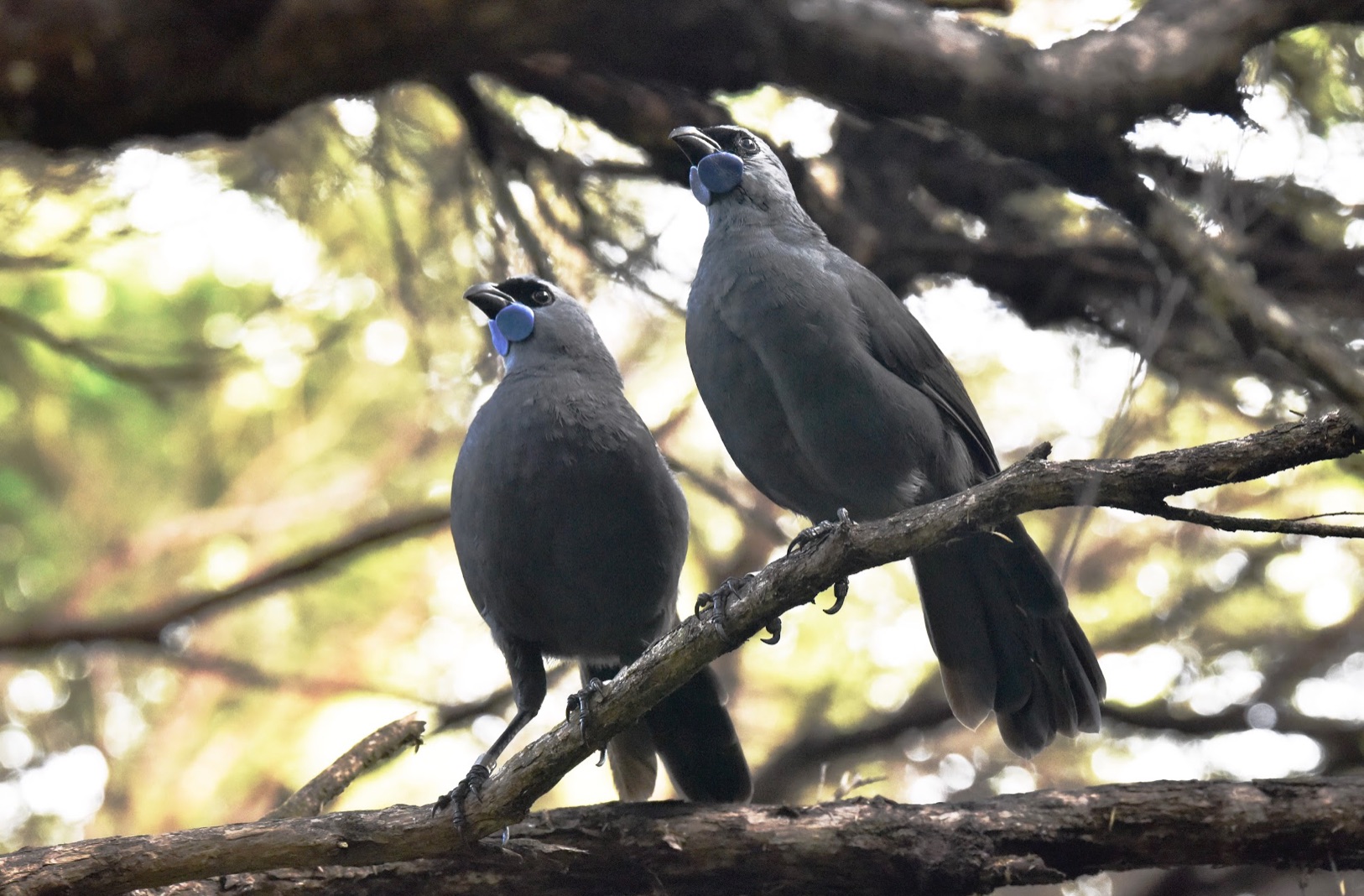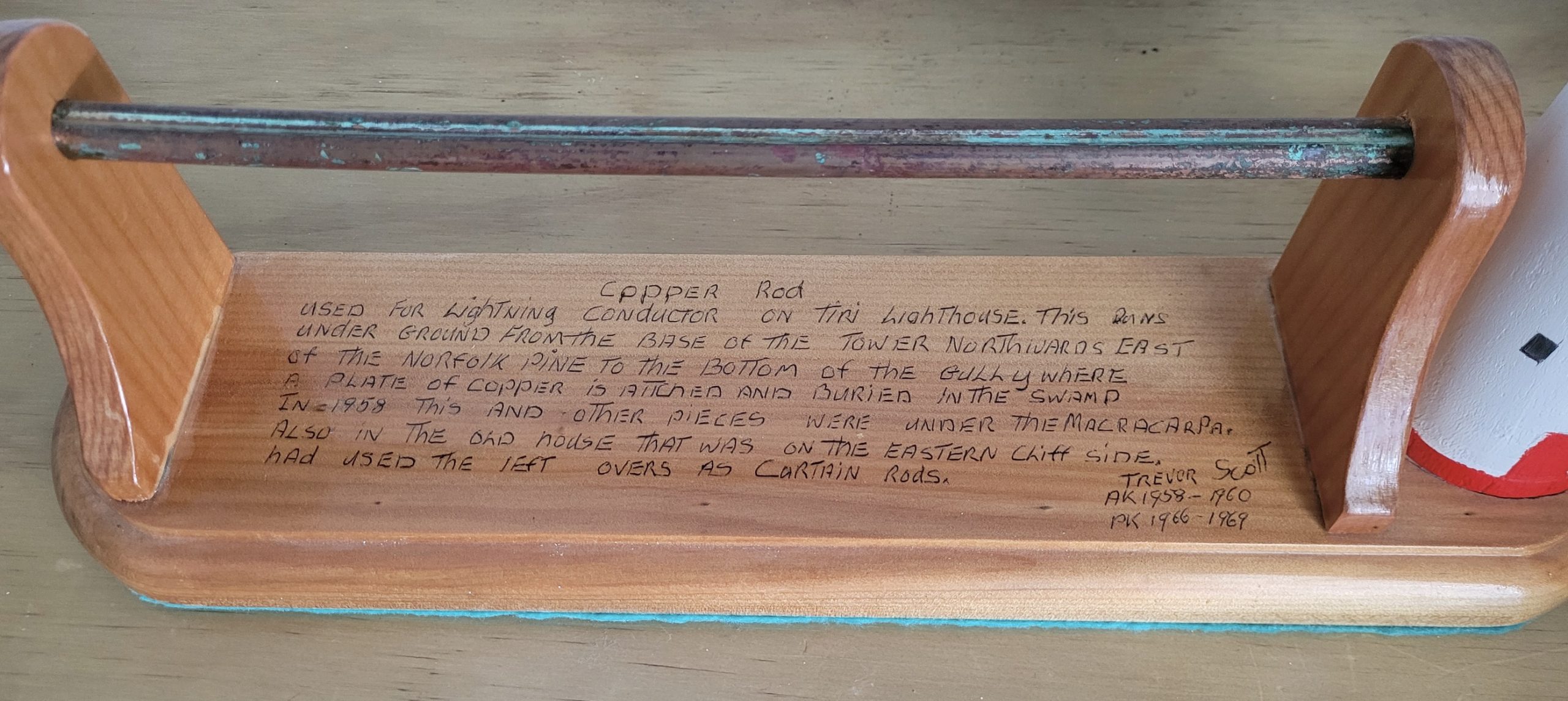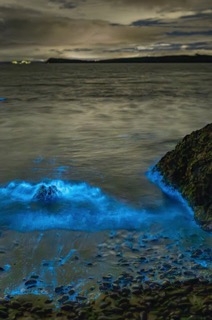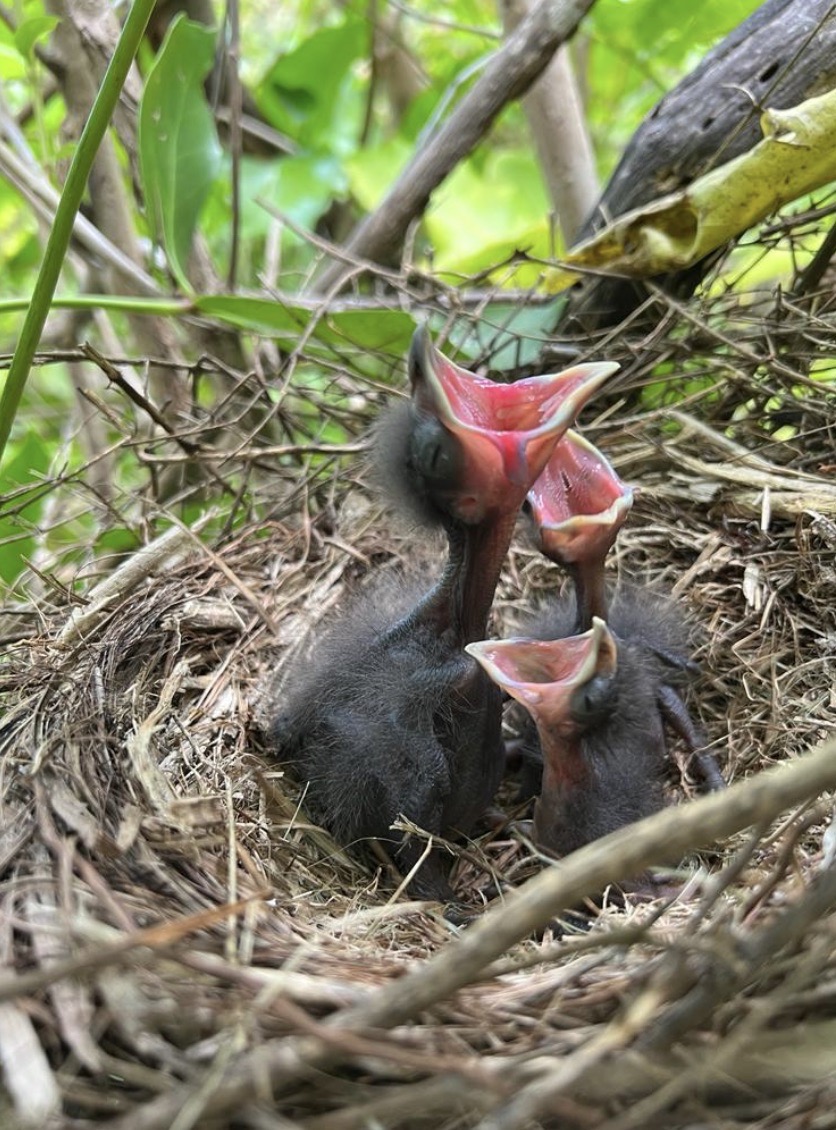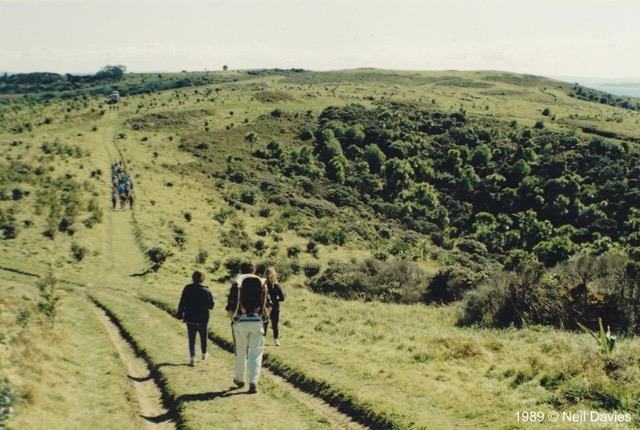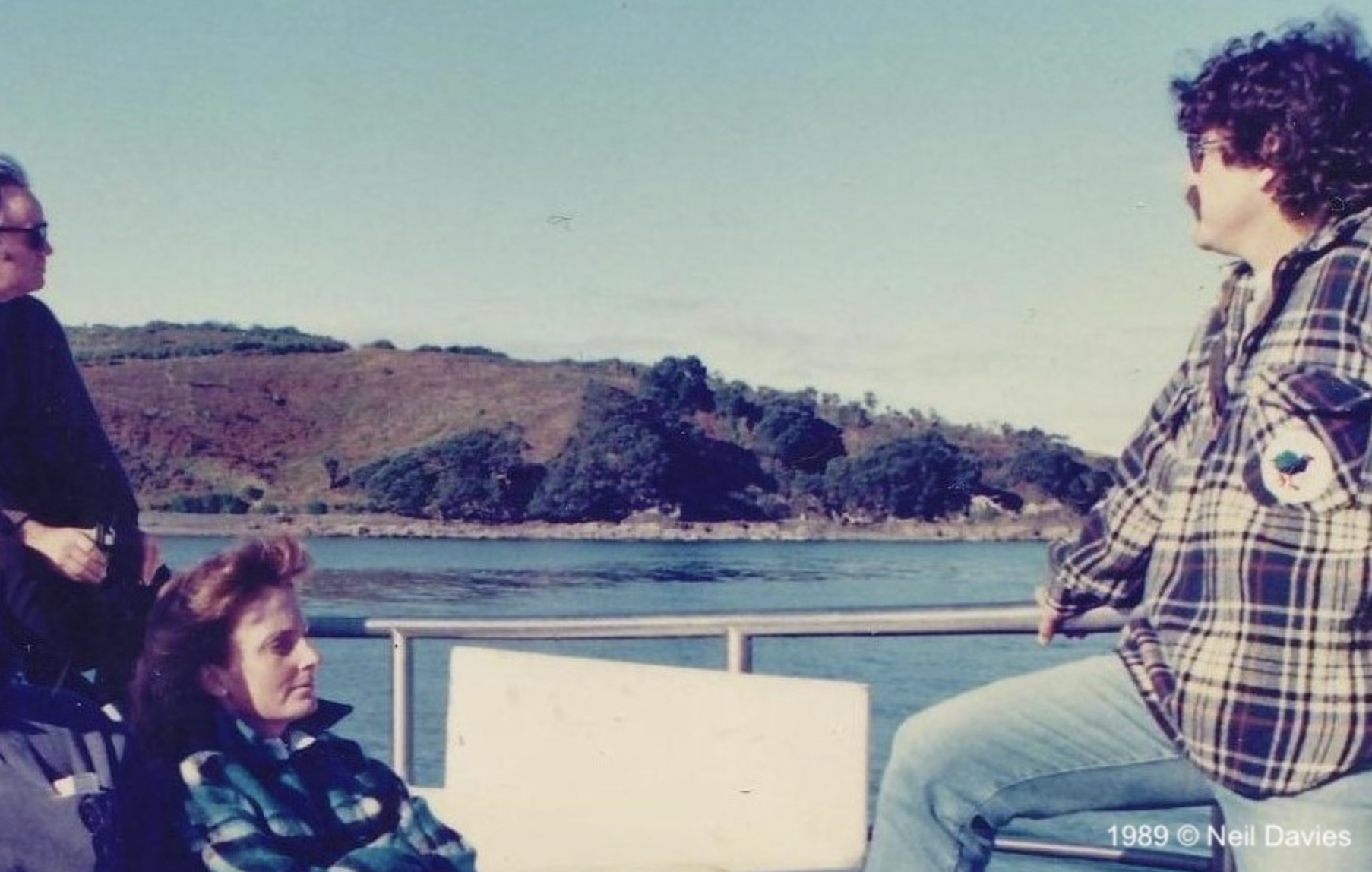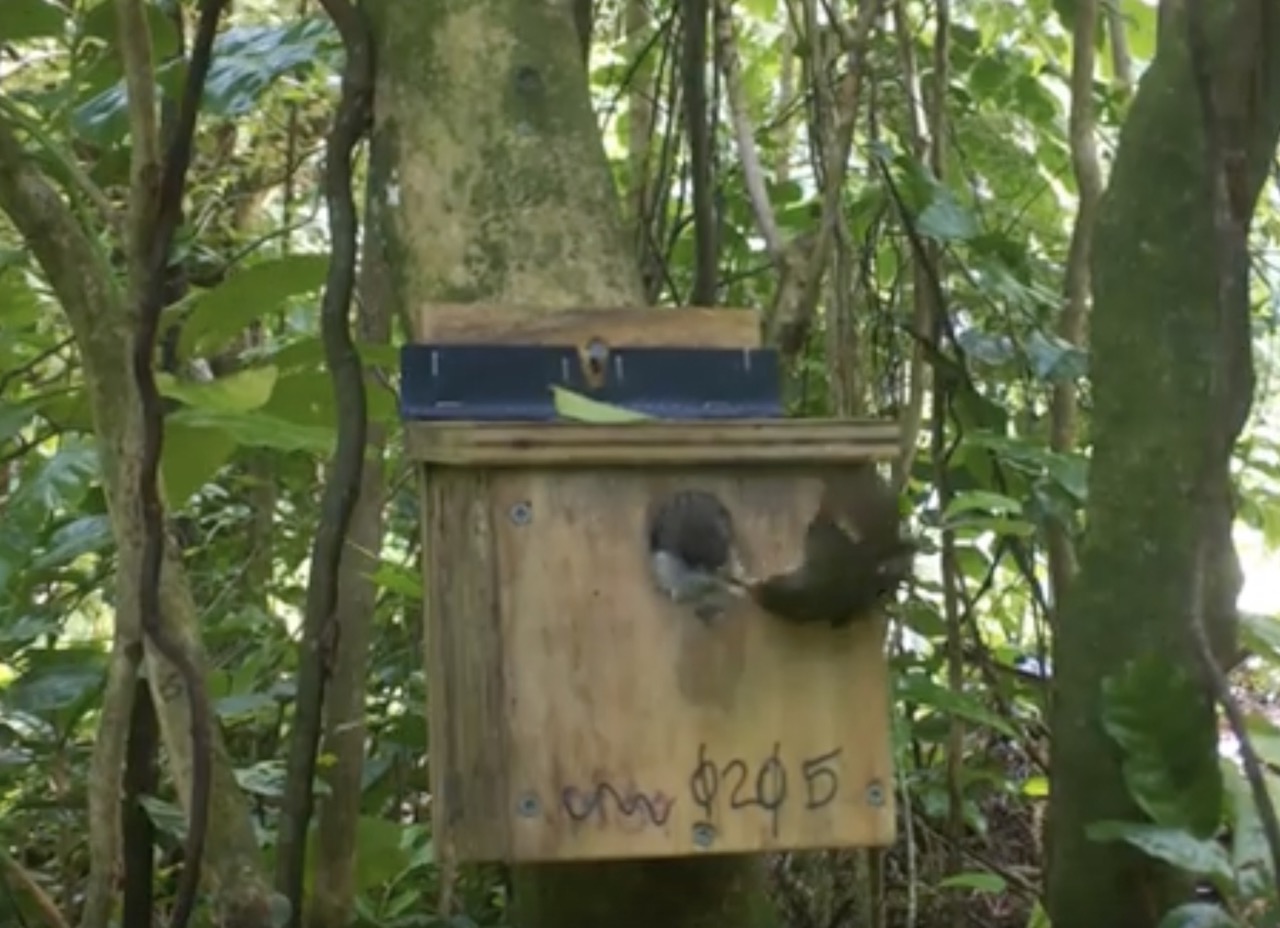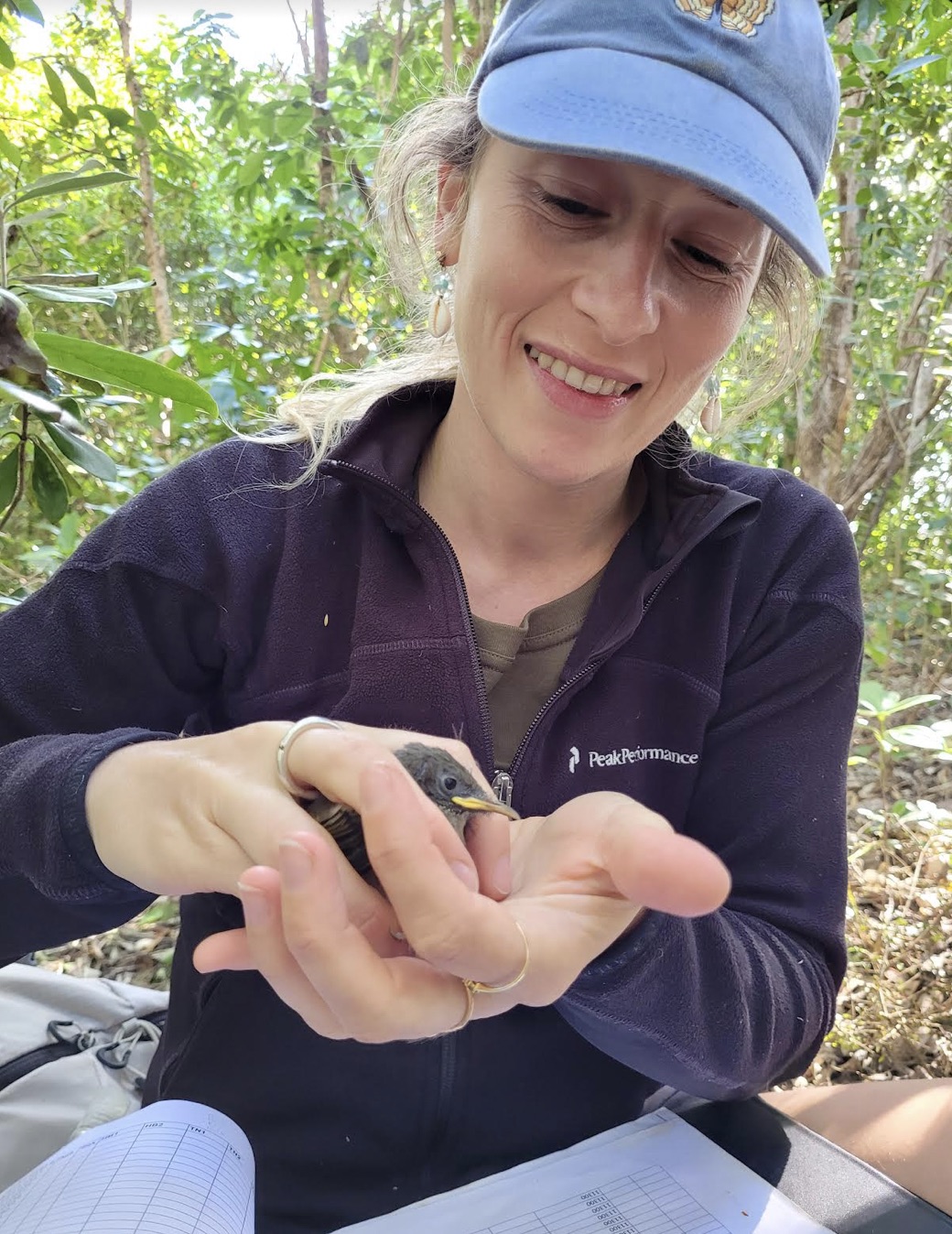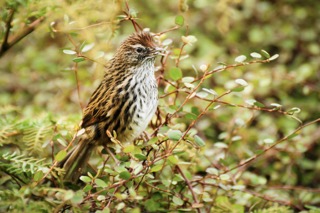Kōkako Music
Kōkako MusicAuthor: Ran Kampel, Assistant Professor of Clarinet Baylor University School of Music Texas, United States of AmericaDate: April 2024Header Photo Credit: Darren Markin Last month my wife and I attended a guided tour with Bethny Uptegrove on Tiritiri Matangi Island. We loved the beautiful colours of all the birds and enjoyed observing them fly around and interact with each other, but what we found to be the most fascinating was the variety of sounds and the birdcalls we heard during our visit. Above all these birdcalls stood out the remarkable call of the Kōkako. Its intricate call captured our attention from the first moment we heard it! My wife and I are classically trained musicians (flute and clarinet respectively), who played with orchestras all over the world. This pure melodic pattern of the Kōkako call was one of the most beautiful chants we ever heard in nature. Bethny, our guide, shared with us that the call we were listening to is unique to this specific pair of Kōkako who are controlling this exact part of the island. Their call can carry for kilometers and is used to mark their territory. It would only change the moment the male were to lose its dominance to a younger Kōkako. She also shared with us that the call was split between the male and female Kōkakos, but it was very hard for us to differentiate the two and tell…
Copper Rod
Copper RodAuthor: Trevor ScottHeader Photo from the archives, pre 1971Date: March 2024Did you know that lighthouses are often struck by lightning? To prevent damage caused by these strikes, lighthouses are equipped with metal poles called lightning rods. These rods are attached to a thick copper wire that runs from the top of the lighthouse down to the ground. When lightning strikes the tower, it enters through the lightning rod and travels down the wire into the ground, minimizing potential damage.
Trevor Scott, who was the lighthouse keeper on Tiritiri Matangi from 1958-1960 and 1966-1969, shared that he remembers seeing the spare left over copper rods used to hang up curtains in the lighthouse keepers house.
Not your average Tuesday on Tiritiri Matangi – or maybe it is!
Not your average Tuesday on Tiritiri Matangi – or maybe it is!Author: Grant Birley. From his second visit to the Island and his first overnight stay.Photo credit: Grant BirleyDate: 20th March 2024My Tuesday morning on the island started like any other morning on Tiritiri Matangi. Up early to get out into the bush to enjoy the dawn’s chorus – it truly is a sound to behold! Then it was back to the bunkhouse for a quick breakfast and coffee, a little breakfast chat around the table and then off on what was going to be a very busy day! The forecast wasn’t great with predictions of rain coming through but that was not to deter my plans of walking around the entire Island! I started at the Bunkhouse and went up the East Coast Track all the way to the Papakura Pa and then back along the tracks that hugged the Western coastline. While it was a long day, it yielded some great sightings and a few special captures too. I absolutely loved the variation in flora and fauna at different stages along the island. My photography goals on the island were two fold. Firstly, in the day, to traverse as much of the island in search of the incredible bird and wildlife that call Tiritiri Matangi home and, secondly, to capture and experience the magic of the night that has become synonymous with this island, from the very elusive and incredibly special creatures who wander…
We chatter quietly away and then someone hears the first kōkako calls
We chatter quietly away and then someone hears the first kōkako calls Author and photo credit: Kathryn JonesDate: 10th February 2024It’s 4.30 am, pitch dark, on a morning in early December. I woke before my alarm went off. Time to start my day. Luckily I am a morning person. I get dressed in my work clothes quickly and quietly, trying to make as little noise as possible so others can continue to sleep. Outside I look up at the moon, the stars, and the lighthouse lights with awe. The team gathers in the bunkhouse kitchen and dining area for a bit of breakfast, and then we each go through our own routine to get ready to go out into the field. Boots, water bottle, binoculars, hand-held radio, pack with snacks and other miscellaneous gear, head torch with red light on. We walk across the grass to the implement shed to sign out and have a safety briefing. It is still dark. We head out to where we are going to look for our first pair of kōkako for the day. Often we head up Coronary Hill and admire the early dawn colours, and then head quickly away. Sometimes, walking along Ridge Rd, ruru fly past you and brush ever so slightly against your arm. We chatter quietly away and then someone hears the-first kōkako calls and we then all listen intently. We reach the area we are going to be working in, and the team leader organises us into starting positions around…
Spade brigade
Spade brigadePhoto credits: Neil DaviesIt’s inspiring to think about the planting programme that started in 1984 on the island to help restore the native birdlife habitat. It’s impressive that over 10 years 280,000 trees were planted by volunteers, which included thirty different species of trees and shrubs. These volunteers formed the “spade brigade” and used pointed spades to plant seedlings that had germinated in the island’s nursery. It’s great to see people coming together to preserve the natural environment. Thanks to the vision of the Neil Mitchell and John Craig who thought of the idea and to the efforts of the volunteers.
The Tiritiri Matangi project changed the way conservation was done in New Zealand. Previously, only a select group of privileged scientists were involved in conservation efforts, which mostly took place in remote areas. However, this project paved the way for community-led-conservation, making it possible for everyone to be involved in conservation.
Below are the before and after photos showing the forest growth.
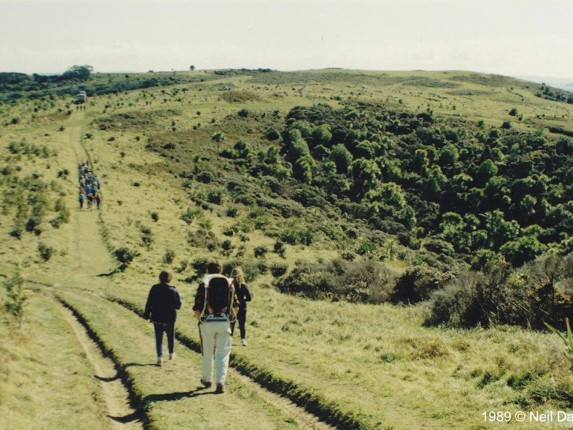
Tiritiri Matangi: a perfect fit for United Nations environment programme
Tiritiri Matangi: a perfect fit for United Nations environment programmeAuthor: Mel Galbraith (From the Dawn Chorus Archives, 130 August 2022)Date: August 2022Ecological restoration on Tiritiri was well ahead of its time. It has taken initiatives such as the sanctuary to encourage a global declaration that is now being internationally recognised, explains Mel Galbraith. Twelve hours after we collectively chorused Auld Lang Syne to welcome in the 1st January 2021, the United Nations launched a “Decade on Ecosystem Restoration” 2021-2030. Not that you would have noticed; there were no fanfares and I doubt if any of the local firework displays were in recognition of this cause. No doubt the global pandemic was occupying the headlines at the time. And, even as we edge back towards a new more stable “norm”, it is still unlikely that the UN initiative will demand much media recognition. Such is the nature of (positive) environmental news. The UN Decade on Ecosystem Restoration 2021-2030 explicitly calls for … Preventing, halting and reversing the degradation of ecosystems worldwide: “The over-arching vision for the UN Decade is a world where – for the health and wellbeing of all life on Earth and that of future generations – the relationship between humans and nature has been restored, where the area of healthy ecosystems is increasing, and where…
The translocation of miromiro to Tiritiri Matangi
Translocation of Miromiro to Tiritiri Matangi April 2004Author:Barbara HughesDate:January 2023Photo credit: Barbara Hughes Over two days in early April 2004, four catching teams in the Hunua Ranges Auckland Council Regional Park area caught 32 miromiro/North Island tomtits, Petroica macrocephala toitoi, for transfer to Tiritiri Matangi. All birds were weighed, banded, individually boxed, and then transported by car to the Helitranz base at Albany from which they were flown by helicopter out to the motu. This was the culmination of over a year of study in the field and many hours habituating the birds with meal worms by a team of Tiritiri Matangi Supporter helpers, and a Massey University international student; co-ordinated by myself. The translocation was overseen by DOC manager Richard Griffiths. The scientific support, advice and capture specialists were Dr Tim Lovegrove (ARC Heritage Department scientist) and Dr Kevin Parker (Reintroduction Biologist). Supporters of Tiritiri Matangi for the study and translocation costings had the financial benefit of Barbara being on a fully funded Royal Society Teacher Fellowship year to carry out the programme. Follow-up monitoring was carried out after the translocation and occasional authentic sightings of banded birds continued up to March 2006. There was no evidence of breeding pairs and the possibility of a…
Titipounamu / Rifleman Survey
Titipounamu / Rifleman SurveyAuthor: Janet Petricevich shares an update, with input from Simon Fordham.(Article taken and reduced from the recent Dawn Chorus magazine)Date: December 2023Tiritiri Matangi Island is a scientific reserve as defined in the Reserves Act 1977. Section 21 of the Act states that ‘The principal purpose of these reserves is the protection and preservation in perpetuity of areas for scientific study, research, education, and the benefit of the country.’ One of these activities is the titipounamu (rifleman) survey which begins in late August or early September and continues to around the end of January. The purpose of this survey is the long-term collection of data about the titipounamu population on the Island. Through this survey, Simon Fordham, with help from his wife Morag and other volunteers, has been collecting data about the longevity and dispersal of these birds. During the initial survey, a team of volunteers walked both the public and research tracks over the Island, listening for the titipounamu’s high-pitched calls. All sightings of the birds are recorded, along with any information about the sighting, e.g. location, number of birds seen and their gender(s), whether they were banded, and any band combinations identified. If weather conditions allow, mist-netting may also take place. This generally targets un-banded…
Alien chick in the bush: Diary of a Swiss girl who settled on Tiritiri Matangi for two months
Alien chick in the bush: Diary of a Swiss girl who settled on Tiritiri Matangi for two monthsAuthor: Maude VernetDate: December 2023Imagine this – what if one day someone told you that you would get the opportunity to travel 18,456 km to a small island lost in the pacific, to uncover multiple bird species that most people on the planet, even those living nearby, have never seen? And what if you could get the opportunity to work with a specific species, the hihi – a cute little bird fiercely fighting extinction, to observe their behaviour daily, while gathering a massive amount of field experience? My response to this proposition was a resounding yes. A few weeks later, I found myself on a plane, ready to explore Tiritiri Matangi and delve into the world of hihi. And the least I could say is that Tiritiri Matangi did not disappoint. I remember my first few days on the island, following Emma (who is the official hihi herder on Tiritiri Matangi) around and trying to keep up with the shower of new information pouring onto my overheated brain. The list of discoveries was extensive, from the bunkhouse, the kitchen dance, and the occasional snoring roommate; to the recipe for sugar, the feeding of hihi and opportunistic korimako (under the watchful eyes of tūīs guarding the feeders) and the hungry impatient takahē following us to their feeder. I…
Mātātā/ fernbird calling and displaying on Tiritiri Matangi
Mātātā/ fernbird calling and displaying on Tiritiri MatangiTaken from the SoTM archives, Dawn Chorus 46. The original article was written by Carl Hayson.Date: November 2023Photo credit: Sarah WellsThirteen mātātā were translocated in June 2001 to rescue them from the path of the new Northern Motorway. Although a transfer was scheduled later that year, scrub clearance for the motorway began suddenly in June. Kevin Parker, a graduate of Auckland University, organized the rescue transfer. The Department of Conservation promptly processed the transfer permit, and Ngati Poa Kaumatua granted their blessing. Handling stress is a significant concern when transferring any new species, and it was unknown how mātātā would respond. Therefore, it was decided that helicopters should be used to transfer birds when the ferry was unavailable. The mātātā is a fascinating bird that can be found in areas of scrub and swamp. Its long tail feathers, which get worn and frayed like the leaves of a fern, have earned it the nickname “fernbird”. With longitudinal brown streaks on its upper body and a white underbelly with brownish-black spots, the mātātā is a beautiful bird to behold. Interestingly, the mātātā is not a strong flyer and has a labored flight with rapid wing beats and a trailing tail. However, it thrives in dense vegetation, which can be found in…
